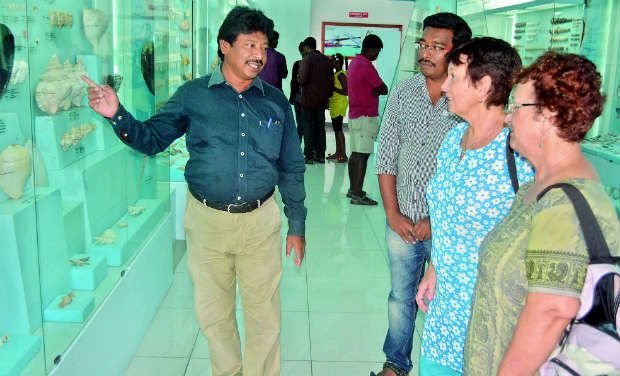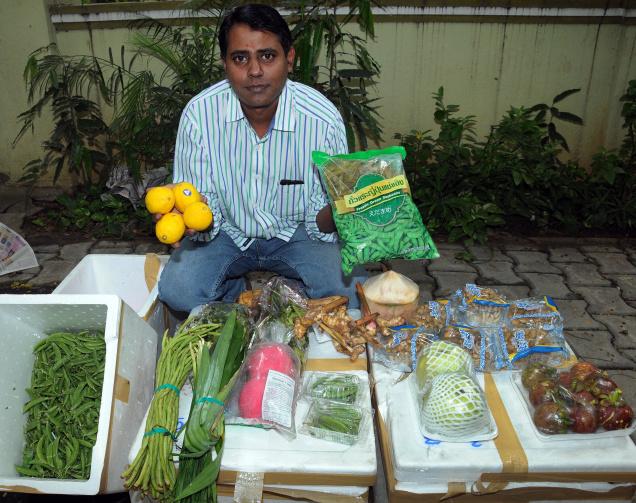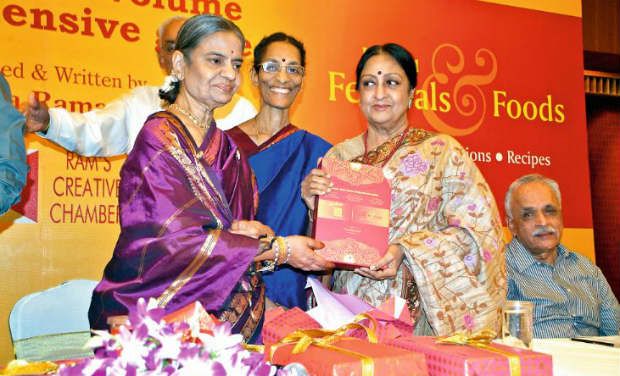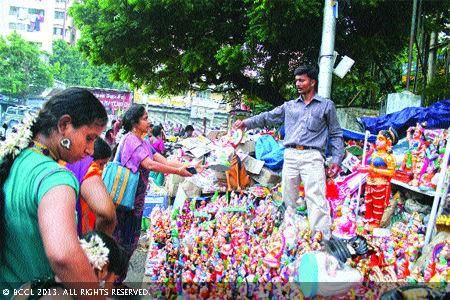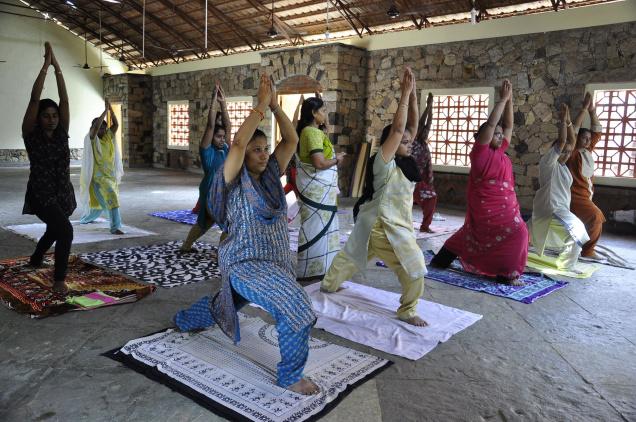
True to the Gandhian ideology of empowering women, Gandhi Memorial Museum offers vocational training programmes
Thamilmozhi Jeyaseelan, a former software engineer, is a busy entrepreneur today. The success story of Mrs. Jeyaseelan, the mother of a four-year-old-girl, is awe-inspiring.
She had enrolled her child in a personality development course conducted by the education wing of the Gandhi Memorial Museum in April. To while away her time, she joined the self-employment course organised by the museum and underwent training in the manufacture of 15 household items such as floor cleaners, ink, ‘oma’ water, phenyl, washing and dish-wash powders. “The seven-hour training was a turning point in my life. It gave me the confidence to leave my job as a software engineer in a private hospital and start a business venture. Today, I am able to spend more time with my family and provide employment to six poor women,” Mrs. Jeyaseelan says. She is manufacturing and marketing phenyl, dish-wash powders and ‘oma’ water. “The ‘oma’ water has become an instant hit in the market. The profits are good and I am glad to provide employment and empower womenfolk,” she adds.
True to the Gandhian ideology of empowering women, the Gandhi Memorial Museum offers a slew of vocational training programmes, besides offering summer classes for school students, yoga and spoken Hindi classes throughout the year.
The museum, housed on the premises of the historic summer palace of Rani Mangammal, is one of the major tourist attractions in Madurai. As per its 2011-2012 annual report, the museum attracted more number of visitors than the National Gandhi Museum in Delhi. From the 2013 fiscal, the museum had drawn 1,94,846 visitors, of which 14,135 were foreign tourists. The museum has not restricted itself to just enthral the visitors, but has been indulging in activities that are fruitful to many. With an extensive library, a research and publication section, an Institute of Gandhian Studies and Research (IGSR) and an education section, there is no dearth of activities in the museum.
The library draws an average of 85 readers every day and has nearly 300 registered members, according to records available in the museum.
The IGSR is probably one of the few places in the country which offers courses on Gandhian Thought. “We offer free courses such as Certificate in Gandhian Thought, Diploma in Gandhian Thought, Diploma in Inter-Religious Dialogue and PG Diploma in Peace and Value Education. The courses are affiliated to Madurai Kamaraj University. Students from Gandhigram Rural Institute and Madurai Kamaraj University undertake research works here,” says S. Jayaraj, research officer at the museum.
Several volumes of books on Gandhian Thought have been translated in the research and publication section, which also documents newspaper reports that resonate Gandhian ideologies such as non-violence and peace, he adds.
According to Mr. Jayaraj, while handing over Rani Mangammal Palace for the establishment of the museum, the State had envisioned a centre where research would flourish. The research centre was established in 1997 and became an approved institute of Madurai Kamaraj University in 2003 and has been disseminating Gandhian Thought and related subjects to the public, he adds.
NO AGE LIMIT
But for the summer courses, the others offered by the museum such as spoken Hindi class do not specify any age limit. “We have been conducting various certificate courses, especially for women, for the past five years. Mostly women attend the tailoring, jewellery-making and household item manufacturing courses and quite a few of them are successful in their business ventures,” says R. Natarajan, education officer of the museum. The education wing also conducts value education courses in schools and colleges to spread the Gandhian values of life.
D. Sridharan, a retired pharmaceutical executive, who is taking the two-month Spoken Hindi lessons in the museum, says spending time learning in the serene atmosphere of the museum is a bliss. “Unlike other centres, the Gandhi Museum charges a nominal fee and teaches us even the fundamentals of the origin of the word. The museum is one of the best places in Madurai and could be spruced up,” Mr. Sridharan says.
ORGANIC FOOD CANTEEN
With the assistance from the State and the Centre, renovation work is under way at the museum. According to M.P. Gurusamy, museum secretary, an organic food canteen will be inaugurated in January. “We are planning to convert the open-air auditorium into an indoor facility. A museum and a park for the children will be constructed,” he says.
The open-air auditorium is given on nominal rent for purposes other than political, communal and religious-oriented events, he says. “The resource persons, who provide training in skill development programmes, are those who are interested in Gandhian ideology. The museum does not pay them and they are volunteers. They only demand a nominal fee of less than Rs. 200 from the participants to meet the expenses of the core materials,” Mr. Gurusamy adds.
According to K.R. Nanda Rao, curator of the museum, the main gallery will soon be refurbished with good lighting.
The yoga training centre, approved by the Tamil Nadu Physical Education and Sports University Centre, has been functioning since 1998. “As of now, those who take part in training come on the advice of the doctors. Yoga should become a lifestyle habit,” says K. P. Gangadharan, yoga coordinator in the museum. People between the age group of 35 and 70 undergo yoga training and at least 100 students enrol for the certificate programmes in yoga every year, he says.
For people such as M. Soundararajan, a retired BSNL employee, who grew up in Madurai, the museum needs better care. “The museum needs more staff to clean the premises. When I was in school, I remember the area behind the palace having beautiful plants. Now, we have trees and more saplings could be planted. A new toilet should be constructed,” concludes Mr. Soundararajan who is now a student of Spoken Hindi.
source: http://www.thehindu.com / The Hindu / Home> News> Cities> Madurai / by M. Vandhana / Madurai – October 21st, 2013
